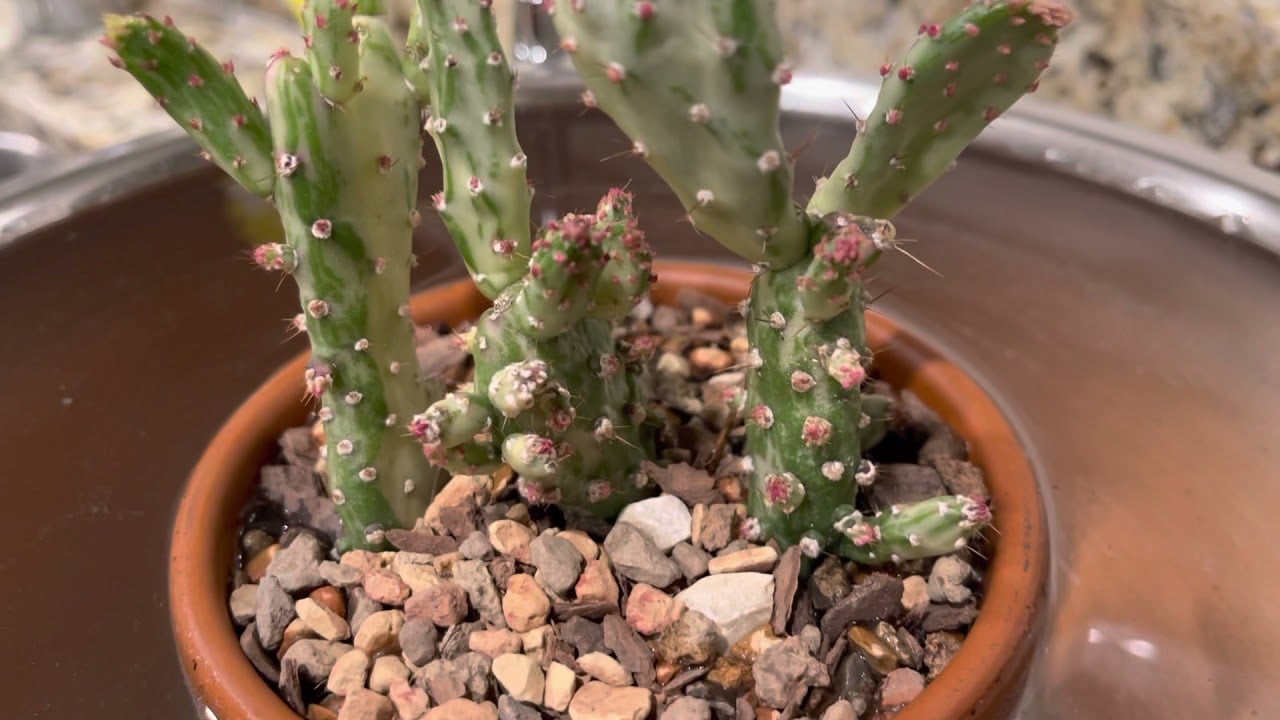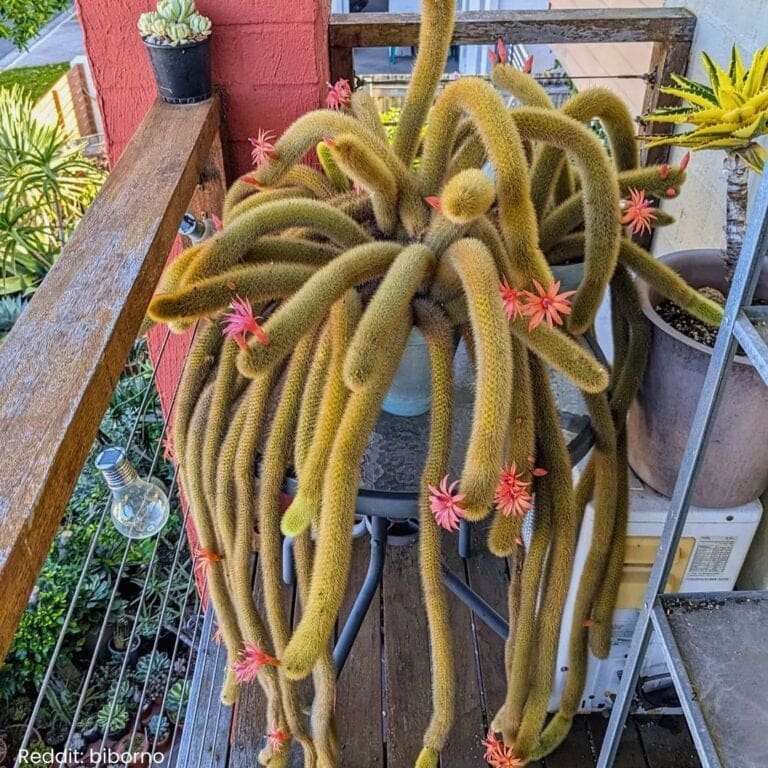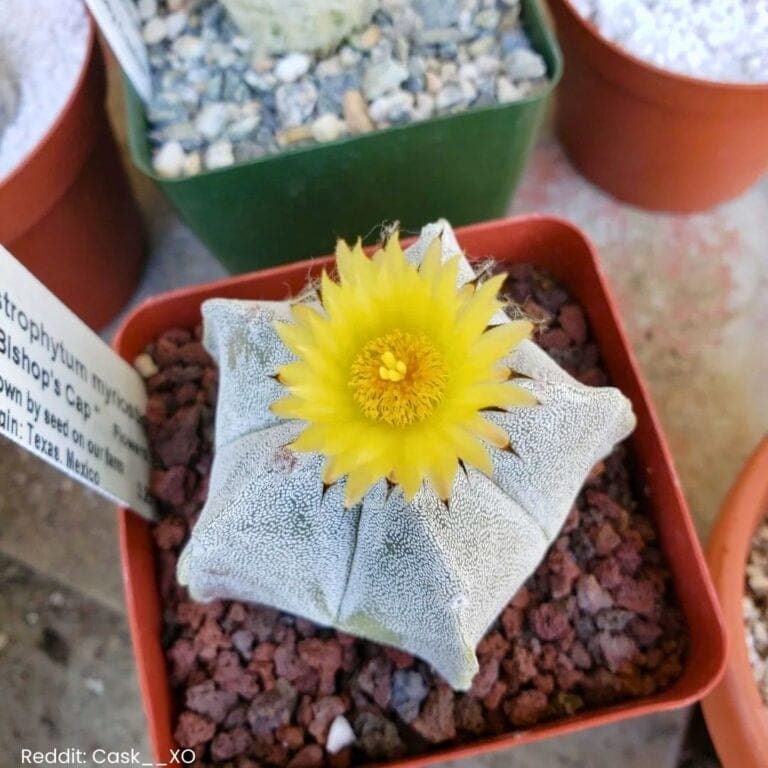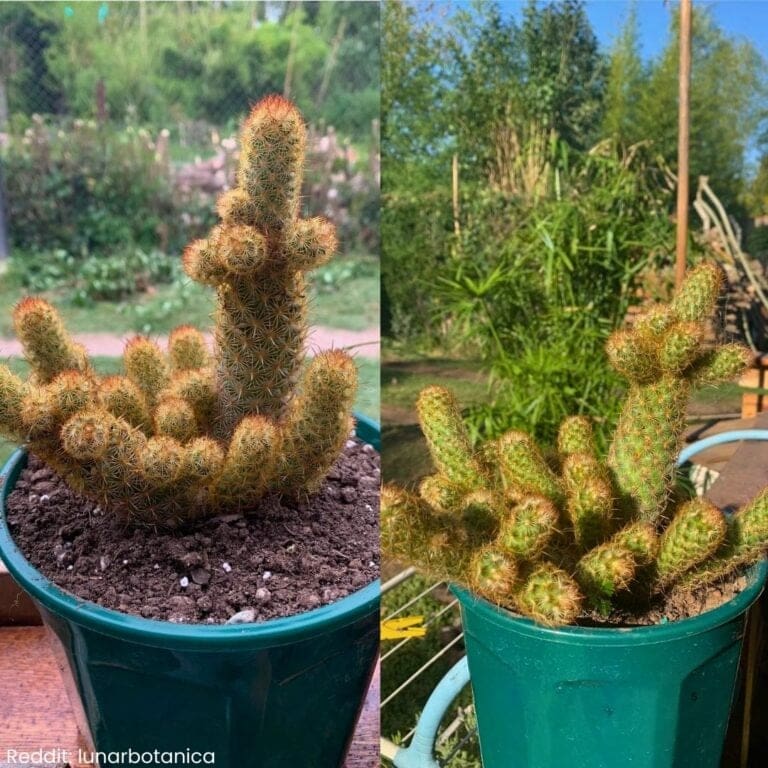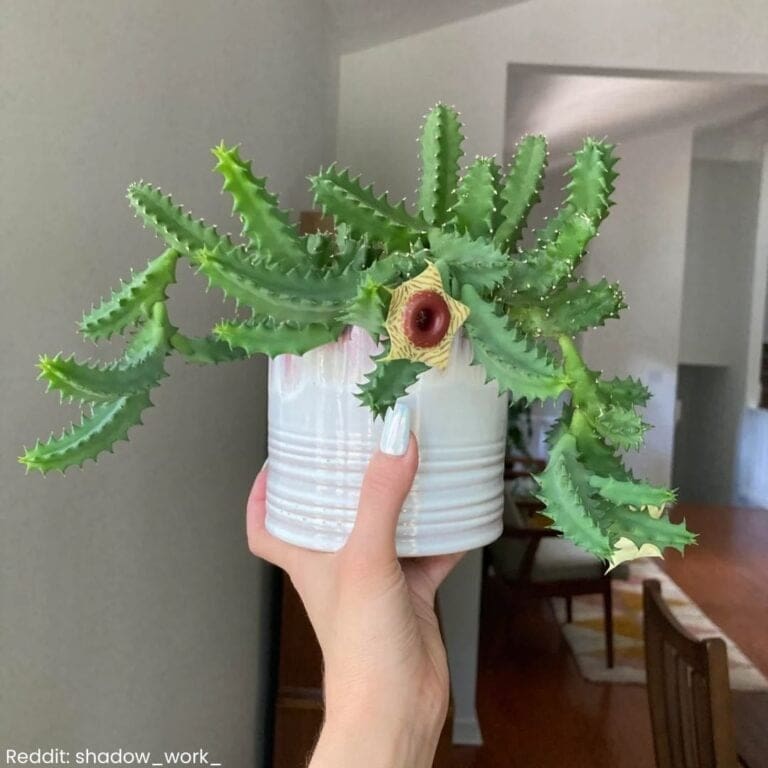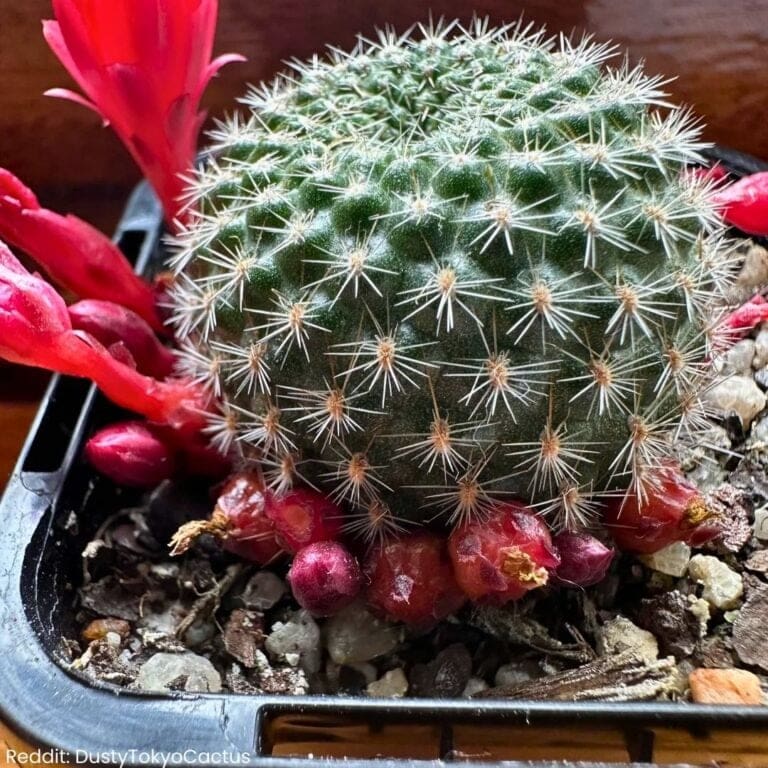Josephs Coat Cactus Care: Tips for Thriving Succulents
Are you looking to spice up your indoor plant collection? 🌵 The Joseph’s Coat Cactus might just be the perfect addition.
Its vibrant, striped colors can brighten up any space and bring a touch of the desert into your home. Plus, it’s a fun plant to care for!
This cactus thrives with minimal watering and plenty of sunlight.
I keep mine near a sunny window where it can soak up the rays.
It’s important not to overwater, as too much moisture can harm the plant.
I usually wait until the soil is completely dry before giving it a drink.
I’ve found that the Joseph’s Coat Cactus can be quite forgiving, which is perfect if you’re new to plant care. 😄
Have you ever had a plant that can actually tell you when it needs water?
Let me share more about how I care for mine—read on to learn all my tips and tricks!
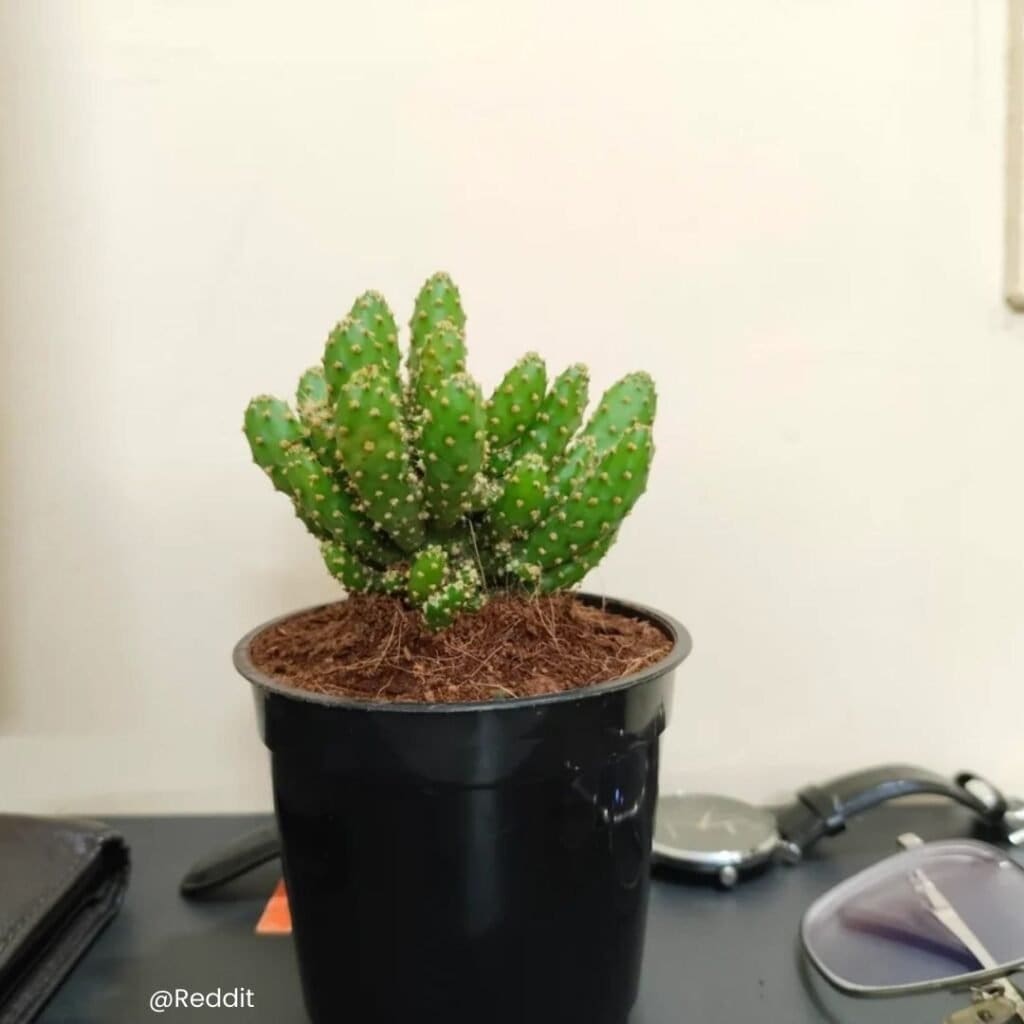
Please note: Simplify Plants is reader-supported. As an Amazon Associate, I earn from qualifying purchases made by our readers with no extra cost added to you all! Some links in the post are affiliate links and I get a commission from purchases made through links in the post.
Understanding the Joseph’s Coat Cactus
The Joseph’s Coat Cactus is a colorful and lively plant that adds a splash of brightness to any indoor or outdoor space. Its unique appearance and easy care make it a favorite among plant lovers.
Origin and Species Varieties
This plant is native to South America, mainly in Brazil and Argentina. The cactus belongs to the Euphorbia genus, which boasts a wide variety of species.
You’ll find that it fits right into diverse settings, from desert landscapes to home gardens.
One of its cool features is the range of colors in its leaves, which is how it got its name! 🌈
Some varieties even have bold patterns, offering different shades of green, red, and yellow. Who doesn’t love a bit of natural art?
Physical Characteristics
The Joseph’s Coat Cactus is known for its distinctive leaf patterns and colors. Its leaves can be vibrant red or a striking mix of colors, much like a painter’s palette. This makes it stand out in any plant collection.
What’s fun about this cactus is its size. It usually stays compact and won’t take over your space.
It’s friendly for small apartments or cozy corners. Plus, its quirky coloration adds an artistic vibe.
Ever thought your cactus could double as an art piece? 😊
Optimal Growing Conditions
I love taking care of my Joseph’s Coat Cactus. It’s not just any plant; it enjoys lots of light, warm temperatures, and the right amount of water.
Let’s dive into how to make it thrive! 🌵✨
Who else talks to their plants, or is it just me?
Light Requirements
My Joseph’s Coat Cactus loves bright light. Direct sunlight is like a vacation for it!
I usually place it near a south-facing window where it gets plenty of sun.
If you don’t have a sunny spot inside, try using a grow light.
Just make sure it gets about six hours of light daily.
Have you ever noticed how your plants seem to smile after a sunbath? 😊
If it stretches or turns pale, that’s its way of asking for more light!
Temperature and Humidity
This cactus is a sunshine lover, preferring warm temperatures.
I aim for 65°F to 80°F indoors.
Chilly drafts and sudden temperature changes? Not its friends.
Humidity isn’t a big deal since it’s a cactus. It can handle normal indoor levels just fine.
But remember, if it’s too humid, the cactus might sulk a bit.
I keep it away from humidifiers in the winter to maintain its cheerful vibe.
Watering Schedule
When it comes to watering, Joseph’s Coat likes a certain rhythm.
Water deeply, but let the soil dry out in between.
In summer, I water about every 1-2 weeks. In the cooler months, it’s less frequent—more like every 3-4 weeks.
Overwatering can lead to root rot, though, so I’m cautious about it.
A little surprise is that it seems to enjoy being thirsty once in a while—like a mini desert trip in my living room! 🌞
Soil Composition
For my Joseph’s Coat Cactus, good drainage is the secret.
A cactus soil mix is best, or you can mix your own!
I use a blend of sand, perlite, and regular potting soil to keep the water flow just right.
The soil should dry out quickly to avoid sogginess.
Ever tried pressing your finger into the soil to check moisture? It’s my favorite trick!
Keeping it simple with the right soil mix means happy roots and a happier plant. 🪴
Planting and Repotting
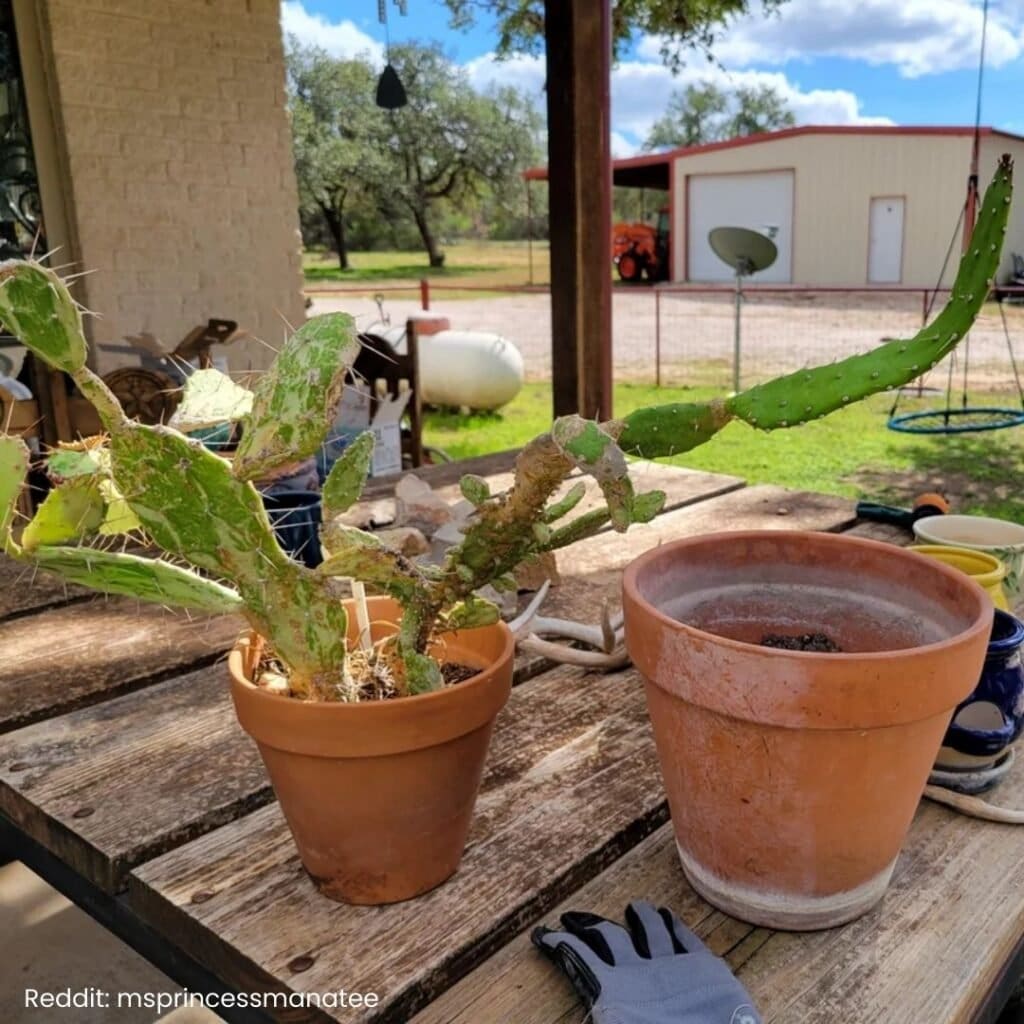
When caring for a Joseph’s Coat cactus, picking the right pot is key.
Proper repotting keeps the cactus healthy and happy. Here’s how to do it in style! 🌵
Choosing the Right Container
Selecting a container for your cactus is like picking the perfect pair of shoes—it matters! 😊
The pot should have good drainage holes to prevent the roots from sitting in water, which they absolutely hate.
A pot that’s slightly larger than the cactus is best. This gives it room to grow without being too big.
How about you? Have you ever had a favorite pot that just felt right? 🌿
Repotting Steps
Repotting may sound tricky, but it’s a breeze once you get the hang of it!
First, gather your tools: a small spade, gloves (succulents can be prickly!), and cactus soil mix.
Carefully remove the cactus from its old pot. Look at those roots! Keep an eye out for signs of rot.
If they look healthy, place the cactus into the new pot filled with fresh soil.
Remember to water lightly a few days after repotting—cacti don’t like baths as much as we do!
Have you ever repotted a plant that looked happier afterwards? 🙃
Maintenance and Pruning
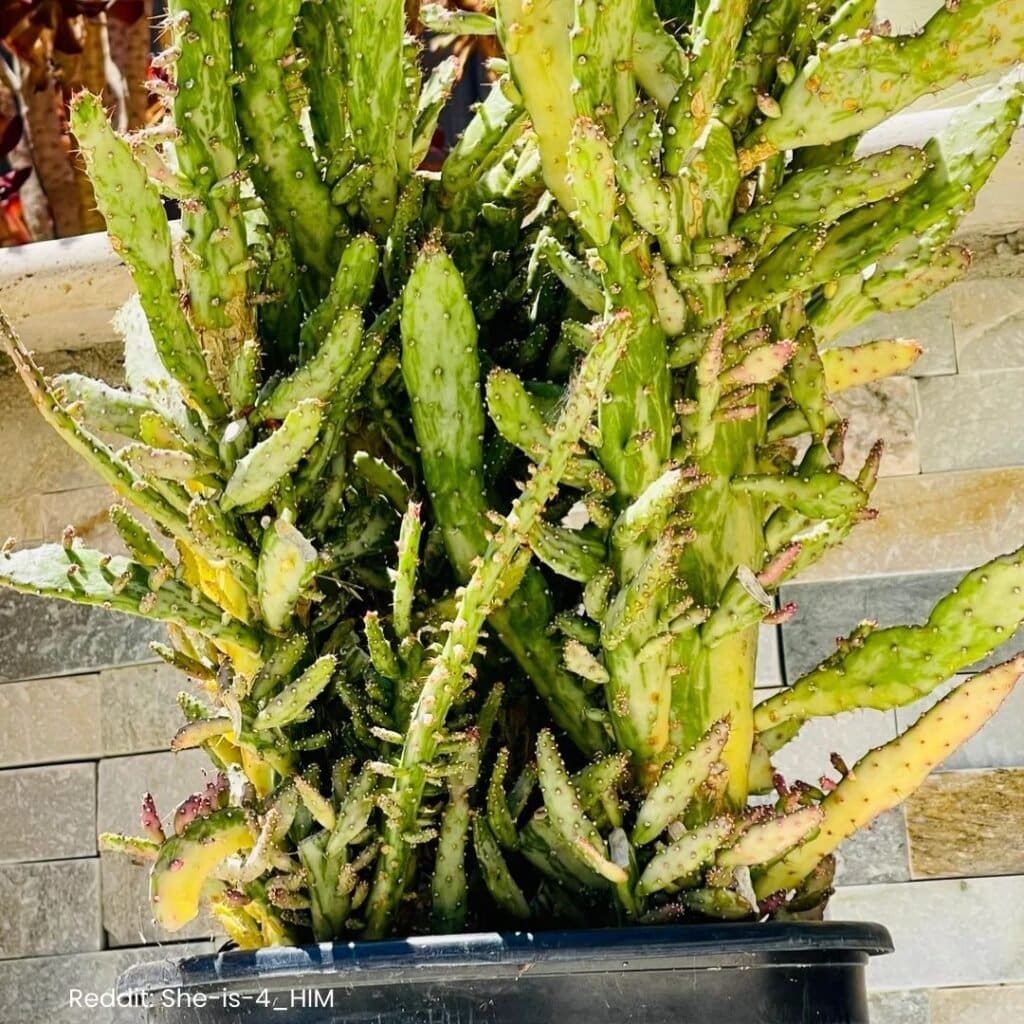
Caring for your Joseph’s Coat cactus involves a bit of maintenance and attention. I’ll share some simple tips on how to prune your cactus and manage any pesky pests that might try to make a home in it. Let’s dive in! 🌵✨
Pruning Techniques
Pruning might sound scary, but it’s actually pretty simple. 🌿
First, wear gloves to protect your hands from the spines.
Using clean, sharp scissors or pruning shears, look for dead or damaged stems, and trim them carefully.
Make sure not to remove more than a third of the plant at one time.
Regular pruning helps keep the cactus healthy and looking its best.
Don’t forget to clean your tools after use to prevent any chance of spreading disease.
Trimming your plant even allows for better air circulation, which is super important.
Have you tried any pruning tricks with your plants that worked well? Let me know! ✂️😊
Pest Management
Pesky pests like mealybugs or spider mites can sometimes find their way to your cactus.
I usually start by checking my plant regularly for any signs of pests.
If I see any, I use a cotton swab dipped in alcohol to remove them gently.
For larger infestations, a mild insecticidal soap can do wonders.
Just spray it on the affected areas, and always test it on a small part first to ensure your plant won’t react poorly.
Keeping the area around the cactus clean also helps prevent pests from coming back.
What’s your go-to solution for keeping plants pest-free? 😎
Propagation
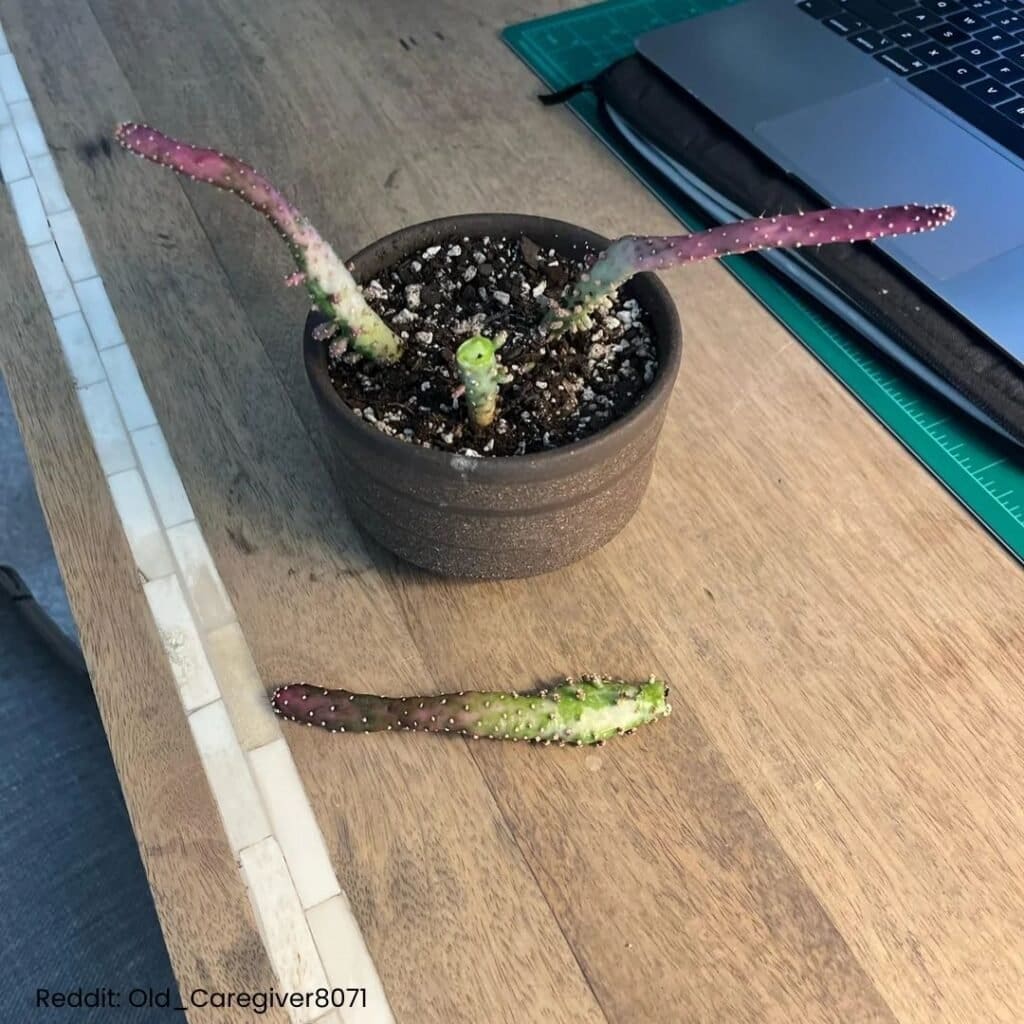
I love propagating my Joseph’s coat cactus. It’s not just rewarding, but quite simple, too.
The main methods are cuttings and seeds. It’s thrilling to watch these plantlings grow and thrive. Let me guide you through the process. 😊🌵
Methods of Propagation
Cuttings are my favorite way to propagate.
I find a healthy-looking stem, then use a clean, sharp knife to cut it.
It’s important to let it dry and callous over for a few days before planting to prevent rot.
Once ready, I plant it in a small pot with a well-draining cactus mix. 🌱
Seeds are another option—though a bit slower.
I start by collecting seeds from mature cactus flowers.
I sow them in a shallow tray filled with sandy soil.
Keeping them slightly moist but not wet helps them sprout. It’s like watching a tiny miracle!
Ever tried growing from seeds? Let me know!
Care for New Plantlings
After planting, it’s crucial to give these little guys some TLC.
I place them in indirect sunlight; direct sunlight can be too harsh for their tender beginnings.
Water sparingly—just enough to keep the soil lightly damp. Too much water can lead to rot.
As I nurture them, I notice their tiny growth and can’t help but feel proud of these little plantlings.
Providing gentle care and attention helps them grow strong and healthy. It’s a testament to patience and dedication!
Have you tried this before? Give it a go and share your story! 🌿
Seasonal Care Tips
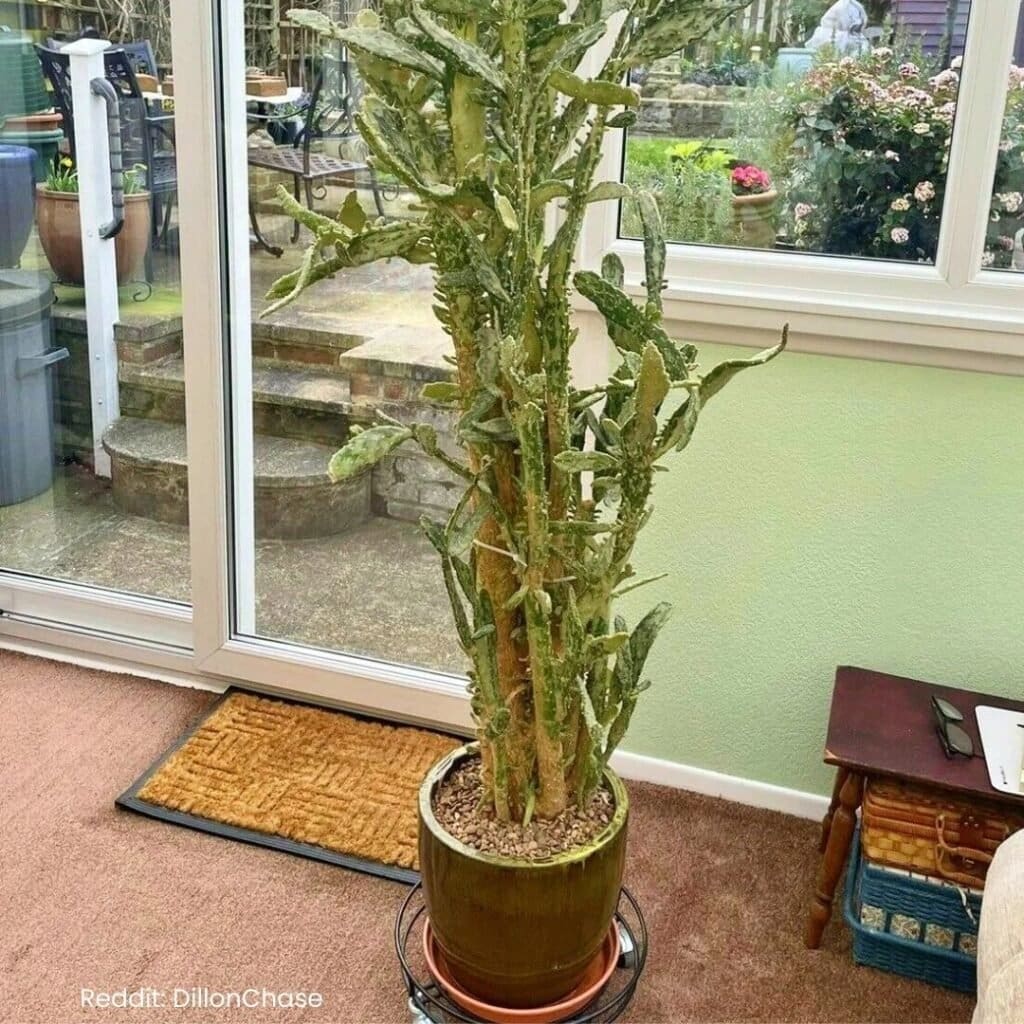
Taking care of a Joseph’s coat cactus means adjusting to the changing seasons.
I want to share some tips for keeping this vibrant plant happy all year round. 🌵
Summer Care
In summer, these cacti love soaking up sunlight.
Place them in a sunny spot, but remember not to let them bake all day. Too much sun can cause the colors to fade.
If your cactus starts looking a little too pale, try a bit of shade now and then. 🌞
Watering can be tricky. They need more in the summer, but not too much.
I water mine every two weeks, letting the soil dry out in between.
It’s like a little splash to keep it cool, but not a soaking bath!
Don’t forget to check for any pesky bugs. They love my cactus just as much as I do.
A quick spray with water can help keep them away. If you spot some stubborn ones, a mix of water and dish soap usually does the trick. 🐜🚫
Winter Strategies
Winter can be tough for these guys.
First, move the cactus away from cold drafts.
I keep mine near a bright window, but not too close to the chill.
They don’t need as much sunlight in winter, but still appreciate a well-lit spot. ☁️
Watering is minimal during the cold months.
I only water mine once a month – just enough to keep it from completely drying out.
Let the soil be your guide. If it looks dry, it’s time for a drink, but not too much.
If you live in a frosty area, consider using a cactus blanket or cover at night.
Trust me, it makes a difference!
Got any tips of your own? Feel free to share! Let’s keep our cacti happy together! 💬✨
Fertilization and Nutrients

Taking care of Joseph’s coat cactus involves selecting the right fertilizer and knowing when to use it. You’ll have a healthy cactus in no time if you get those right! 😄
Fertilizer Types
When it comes to fertilizer, cactus-specific types are your best bet. They contain the right balance of nutrients like nitrogen, phosphorus, and potassium specifically tailored for succulents.
Have you thought about using a balanced liquid fertilizer diluted to half-strength? That’s another option if you can’t find cactus-specific ones.
Keep it simple. Steer clear of high nitrogen fertilizers, as these might lead to soggy stems. And no one wants a droopy cactus, right?
Organic options are also out there! I’ve tried compost tea and had some nice success with it.
The key is to stick to something light that won’t overwhelm the cactus. 🌵
Feeding Schedule
How often should you feed your cactus?
Well, during the growing season, which happens from spring to early fall, feeding once a month should work.
In the winter months, your cactus rests. Like us enjoying a cozy day indoors, your cactus doesn’t need much extra food. 💤
In warmer months, remember to check if your cactus needs more or less by observing its growth.
If it starts looking sluggish, maybe it needs a bit more.
If you’re unsure, it’s totally okay to ask someone at your local garden center.
They can give specific advice tailored to your plant.
Have any of you checked there? You might meet fellow plant lovers who can share their tips! 😊
Common Issues and Solutions

Taking care of a Joseph’s coat cactus can sometimes be tricky. It’s all about finding the right amount of water and sunlight.
Let’s tackle some common problems that pop up and how we can fix them! 😊
Overwatering Signs
You might be tempted to water your cactus like a thirsty camel! But, too much water can cause problems.
The plant may start looking sad. Leaves might turn yellow or become mushy. In serious cases, you may notice a bad smell or fungus.
Check the soil moisture by sticking your finger in up to the second knuckle.
If it feels wet, hold off on the watering can. When it’s time, give it a drink that drains well.
Use a pot with holes at the bottom so the water doesn’t hang around too long. 🌵
Underwatering Signs
Maybe you’ve been too cautious with watering. A parched cactus can look shriveled or have dry, crispy edges on its leaves. Poor thing might even start dropping leaves.
I find it helps to water when the top inch of soil feels dry—kind of like testing a cake with a toothpick!
Consider setting a reminder if you forget to give it some love every couple of weeks.
Show your cactus you care by keeping a closer eye on it! 💧
Dealing With Sunburn
Who knew a cactus could sunburn, right? Too much sun can cause brown spots on their pretty colorful leaves. Balancing light is key.
In really sunny areas, offer some shade during peak hours, like a sun hat on a bright day.
If it already has spots, it won’t heal, but new growth should be healthy.
Place your cactus near a bright but indirect sunlight spot or use sheer curtains to soften the rays.
Your cactus will thank you and look fab with its healthy glow! ☀️
Frequently Asked Questions
I’ve gathered some common questions about caring for the Joseph’s Coat cactus. Whether you’re a beginner or a seasoned plant enthusiast, I’ve got some tips and tricks to help you keep your cactus thriving.
How should I care for a Variegated Joseph’s Coat cactus?
Caring for a Variegated Joseph’s Coat cactus is like having a little sunshine in your home. 🌞
I keep mine in a spot with plenty of light and water it sparingly. It’s important to let the soil dry out between waterings. Simple, right?
What are the ideal sunlight requirements for a Joseph’s Coat plant?
The Joseph’s Coat plant is a sun-lover! ☀️
I place mine where it gets bright, indirect light for most of the day. Direct sunlight can be too much, so a balance is key. You’ve got to find that “just right” spot.
How can I propagate Joseph’s Coat cactus effectively?
Propagating this cactus is a fun activity! Taking stem cuttings is my favorite method. 🌵
I let the cuts dry for a few days before planting them in soil. Watching new roots form is like a mini science experiment in my own home!
What should I do if my Joseph’s Coat cactus is drooping?
If your cactus is drooping, it might be thirsty or getting too much shade.
I gently check the soil moisture and adjust its light exposure. Sometimes, just a little move can make a big difference.
Have you ever had a plant throw a tantrum like that? 😄
Can you offer tips for keeping a potted Joseph’s Coat cactus healthy?
A pot with good drainage is important. 🪴
I use a cactus mix soil, water carefully, and find a sunny spot for it. Feeding it with cactus fertilizer every few months keeps it happy.
What are the different varieties of the Joseph’s Coat plant?
There are many varieties, each with unique color patterns.
From reds and yellows to greens and purples, there’s a color combo for everyone.
Collecting these beauties can be like catching Pokémon—gotta have them all!
What’s your favorite color mix?
Recommended Garden Supplies
| Product Image | Our Recommended Gardening Supplies | Check Offers! |
|---|---|---|
Top Top
Top
Top
Top
Top
Top
Top
Top | rePotme Houseplant and Tropical Classic Potting Soil Mix | Check Offer On Amazon |
 Top
Top
Top
Top
Top
Top
Top
Top | Espoma Organic Indoor Plant Food | Check Offer On Amazon |
 Top
Top
Top
Top
Top
Top
Top
Top | GooingTop LED Grow Light 6000K Full Spectrum Clip Plant Growing Lamp | Check Offer On Amazon |
 Top
Top
Top
Top
Top
Top
Top
Top | Soil Moisture Meter | Check Offer On Amazon |
 Top
Top
Top
Top
Top
Top
Top
Top | Govee Hygrometer Thermometer, Bluetooth Enabled! | Check Offer On Amazon |
 Top
Top | LEVOIT Humidifiers for Large Room(Best For Plants) | Check Offer On Amazon |
 Top
Top
Top
Top
Top
Top
Top
Top | Upgraded DIY Automatic Drip Irrigation Kit, 15 Potted Houseplants Support | Check Offer On Amazon |
 Top
Top
Top
Top
Top
Top
Top
Top | Stainless Steel Heavy Duty Gardening Tool Set | Check Offer On Amazon |
 Top
Top
Top
Top
Top
Top
Top
Top | Bonide Insecticidal Soap | Check Offer On Amazon |
 Top
Top
Top
Top
Top
Top
Top
Top | Bonide 32 oz Spray Neem Oil for Organic Gardening | Check Offer On Amazon |
 Top
Top
Top
Top
Top
Top
Top
Top | Garden Safe Fungicide | Check Offer On Amazon |

